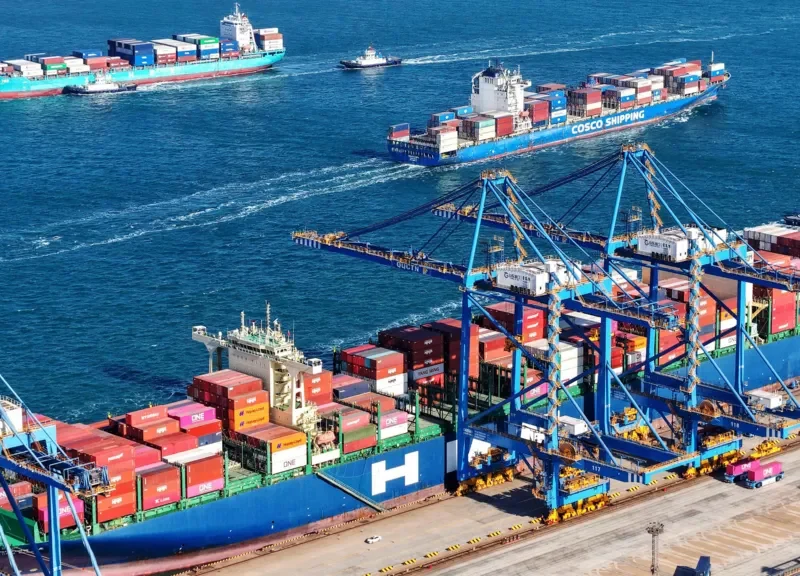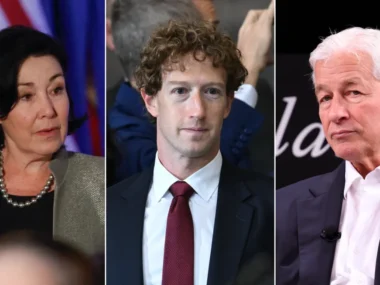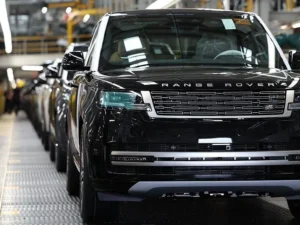China’s countermeasure import tariffs on certain US products took effect on Monday, escalating trade tensions between the world’s two largest economies. Meanwhile, US President Donald Trump has warned of additional tariffs on other nations.
Beijing announced the move on February 4, just moments after Washington imposed a 10% levy on all Chinese goods.
On Sunday, Trump revealed plans for a 25% tariff on all steel and aluminum imports, with an official announcement expected Monday. Speaking aboard Air Force One en route to the Super Bowl, he also mentioned plans for reciprocal tariffs on other countries but did not specify which ones.
China’s latest import duties include a 15% tax on US coal and liquefied natural gas, as well as a 10% tariff on American crude oil, agricultural machinery, and large-engine vehicles.
Additionally, Chinese regulators have launched an anti-monopoly investigation into Google and added PVH—the American parent company of Calvin Klein and Tommy Hilfiger—to its “unreliable entity” list. China has also introduced export restrictions on 25 rare metals, crucial for electronic devices and military equipment.
Trump’s weekend announcement about steel and aluminum tariffs follows recent agreements with Canada and Mexico, exempting them from the 25% levies initially threatened on all their exports.
During his first term, Trump had imposed similar tariffs—25% on steel and 10% on aluminum—but later granted duty-free quotas to several trading partners, including Canada, Mexico, and Brazil. The European Union (EU) import duties were only resolved after the Biden administration took office.
On Sunday, Trump did not clarify whether exemptions would apply to any countries under the new tariff plan. His proposal to impose reciprocal tariffs aligns with a campaign promise to match duties levied on US exports. He also indicated that vehicle import tariffs remain an option, following reports that he might grant selective exemptions.
Trump has repeatedly criticized the EU for imposing higher tariffs on American cars than the US does on European vehicles. Last week, he told the BBC that tariffs on EU goods could be introduced “pretty soon” but suggested a deal might be negotiated with the UK.
After the latest US tariffs took effect, China accused Washington of making “unfounded and false allegations” regarding fentanyl trade to justify the measures. In a complaint to the World Trade Organization (WTO), Beijing argued that the US tariffs were “discriminatory and protectionist,” violating global trade rules. However, experts suggest China is unlikely to win the dispute, as the WTO’s dispute resolution panel remains nonfunctional.
Although Trump was expected to speak with Chinese President Xi Jinping, he stated there was no urgency for talks.
“China is far better prepared than it was during Trump’s first term,” said Scott Kennedy, a Chinese business and economics expert at the Center for Strategic and International Studies. “While its economy has slowed cyclically, its technological capabilities have significantly improved, and it has diversified trade and investment.”
Several of Trump’s executive actions since taking office on January 20 have been adjusted.
On Friday, he temporarily lifted tariffs on small packages from China, which, alongside the 10% levy, took effect on February 4. This suspension will remain in place until systems are fully established to process and collect tariff revenue efficiently.
After the ruling revoked duty-free treatment for shipments under $800 (£645), the US Postal Service (USPS) initially halted package acceptance from China but reversed its decision a day later.











